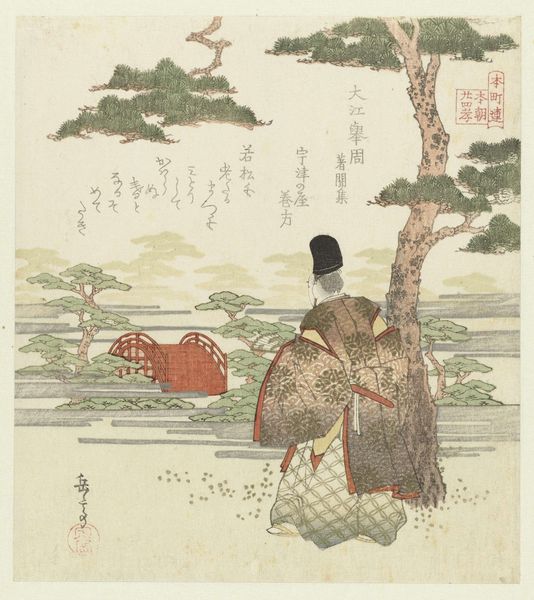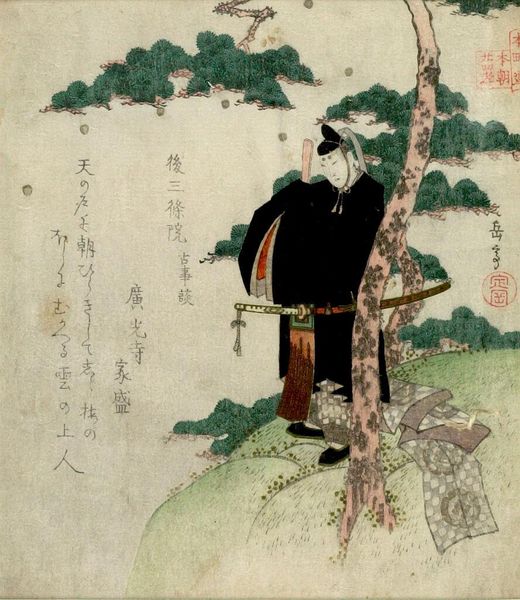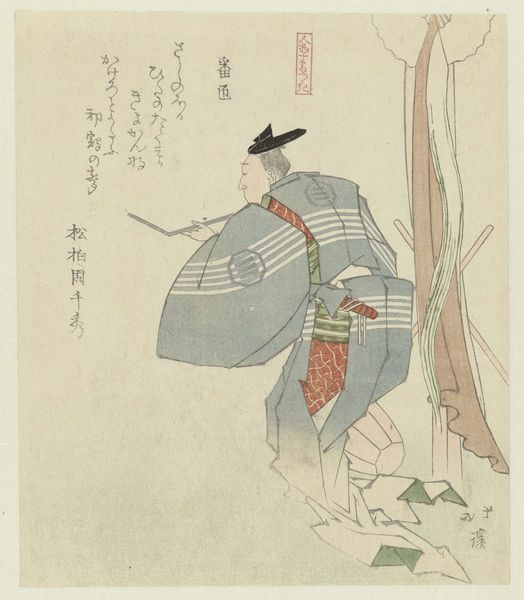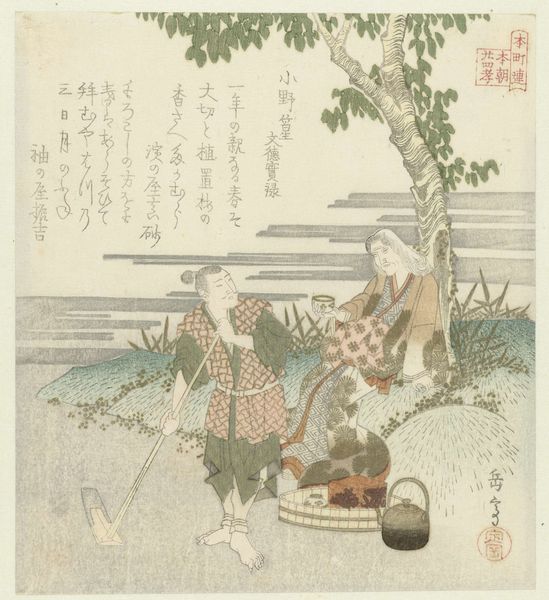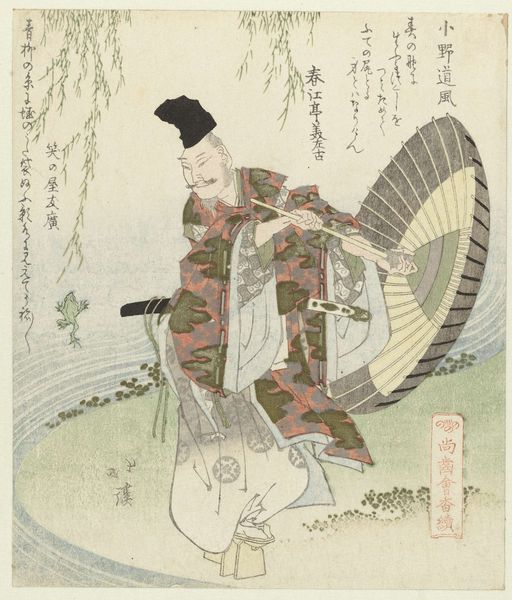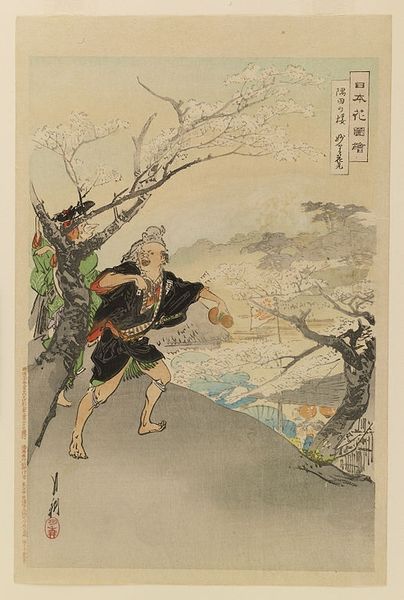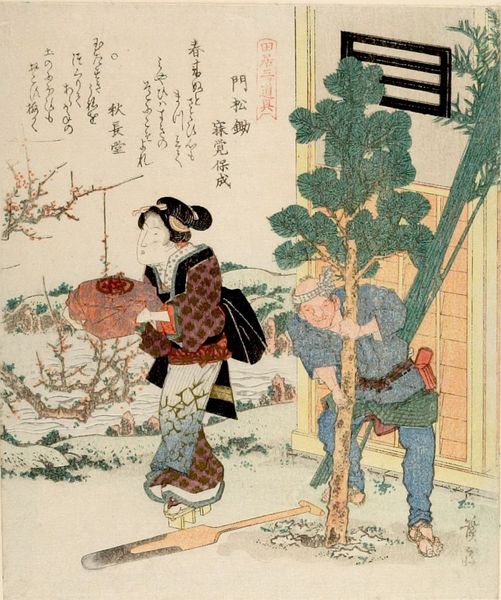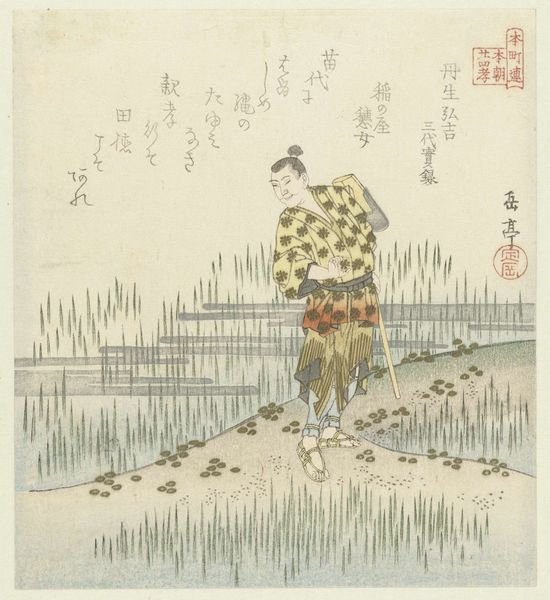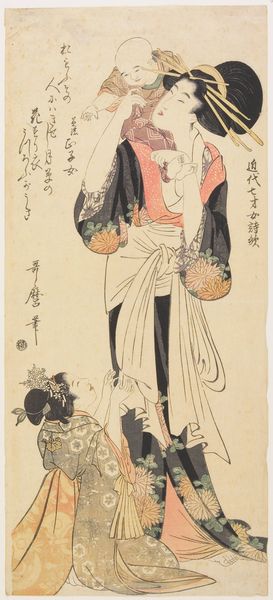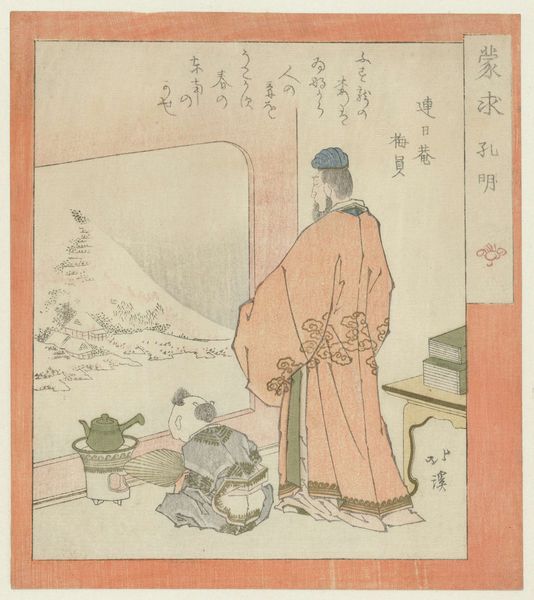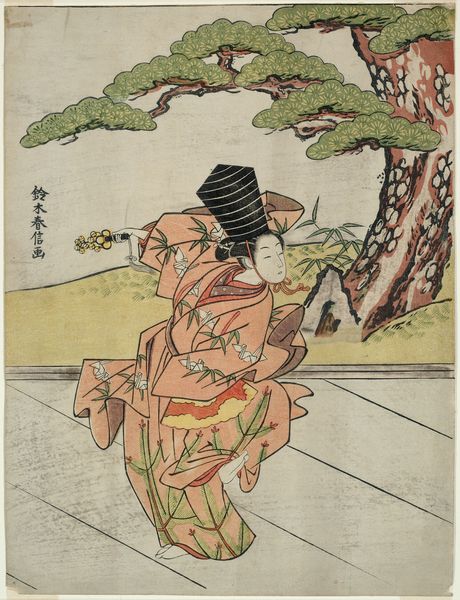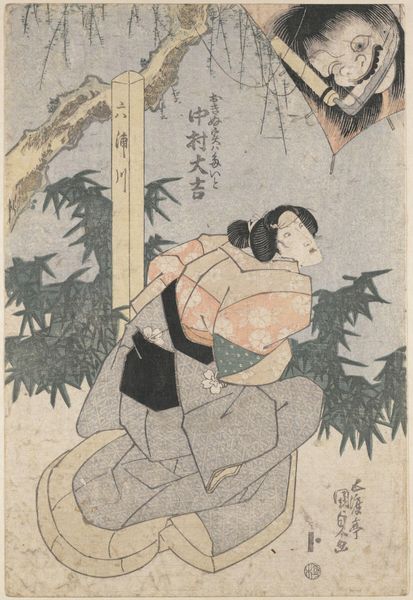
Twenty-four Japanese examples of filial piety for the Honchôren 1821
0:00
0:00
yashimagakuteiwudaoyueting
Rijksmuseum
Dimensions: height 204 mm, width 183 mm
Copyright: Rijks Museum: Open Domain
This woodblock print by Yashima Gakutei, showcases a figure dressed in dark robes leaning against a tree. His sword suggests a warrior or samurai status, indicative of his social standing and moral obligations during the Edo period. The sword, a prominent symbol here, evokes images of justice and honour. This iconography is not unique to Japan; across cultures, the sword is a symbol of power and integrity. Think of the classical Greek warriors or medieval knights. Each uses the sword as an extension of their will, imbuing it with similar values of strength and moral authority. The presence of the sword, passed down through generations, is loaded with cultural and psychological weight, resonating in our collective memory. A sense of respect and perhaps fear accompanies the image of the figure, engaging us on a deep, subconscious level. Like a snake biting its own tail, the sword’s representation continues in a non-linear, cyclical progression. It resurfaces, evolves, and takes on new meanings in different historical contexts, continually shaping the cultural landscape.
Comments
No comments
Be the first to comment and join the conversation on the ultimate creative platform.

